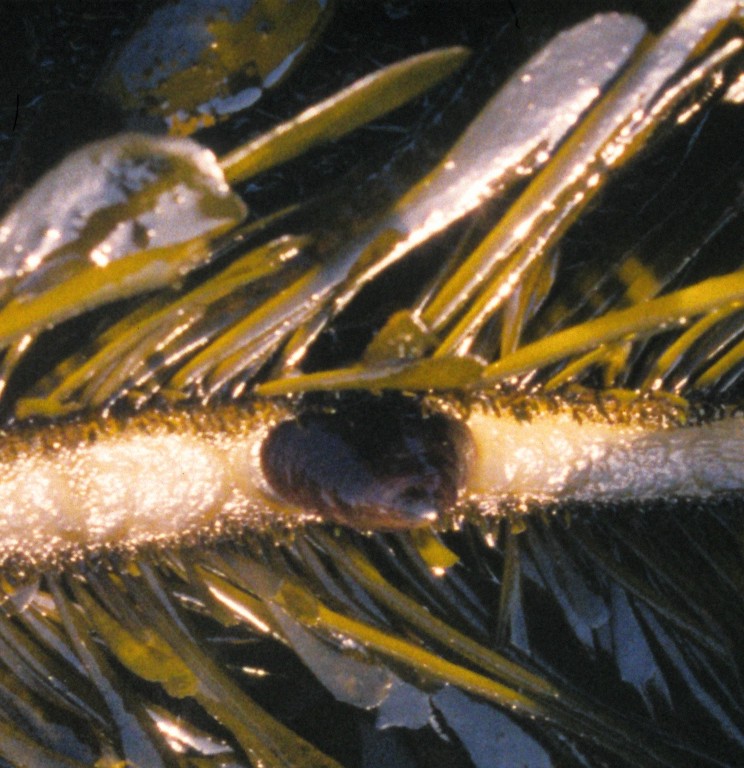Discurria insessa (Hinds, 1842)Common name(s): Seaweed limpet |
|
| Synonyms: Notoacmea insessa |  |
| Phylum Mollusca
Class Gastropoda Subclass Prosobranchia Order Patellogastropoda Family Lotiidae |
|
| (Discurria insessa on Egregia stipe, San Simeon, CA. Approx length 2 cm) | |
| (Photo by: Dave Cowles 5-01) | |
How to Distinguish from Similar Species: Lottia instabilis lives on the stipe of other algae but has a curved aperture to its shell so that it rocks when placed on a flat surface. Lottia pelta may be found on rocks or on seaweed such as Egregia but it is white inside with a brown apical blotch and a dark band around the interior margin of the aperture, its outer surface is mostly bluish and may have strong ribs, and its height is only about 1/2 the width.
Geographical Range: Wrangell Island, Alaska to Bahia Magdalena, Baja California. Abundant in central and N. California but rare north of Oregon.
Depth Range: Low intertidal zone, open coast.
Habitat: Lives on stipes of the brown seaweed Egregia (feather boa kelp)
Biology/Natural History: This species lives only on Egregia. Young limpets seem to orient randomly on the stipe but adults are almost always oriented longitudinally along the stipe. They feed both on epiphytes and on the Egregia itself. Spawns mainly in spring and summer. Has high mortality during the winter--the largest individuals are usually not more than 1 year old. Larvae settle preferentially on large, crowded, post-reproductive Egregia and on fronds which already have adults. They grow fastest if they settle on scars made by older limpets. This species runs away quickly if it contacts a seastar such as Pisaster ochraceus.
| Return to: | |||
| Main Page | Alphabetic Index | Systematic Index | Glossary |
References:
Dichotomous Keys:
Kozloff
1987, 1996
Smith and Carlton, 1975 (As Notoacmea insessa)
General References:
Morris
et al., 1980 (as Notoacmea insessa)
Scientific Articles:
Phillips, D.W., and P. Castori, 1982. Defensive responses to
predatory seastears by two specialist limpets, Notoacmaea
insessa
(Hinds) and Collisella instabilis (Gould),
associated with marine
algae. J. Exp. Mar. Biol. Ecol. 59: 23-30
General Notes and Observations: Locations, abundances, unusual behaviors:
Authors and Editors of Page:
Dave Cowles (2004): Created original page